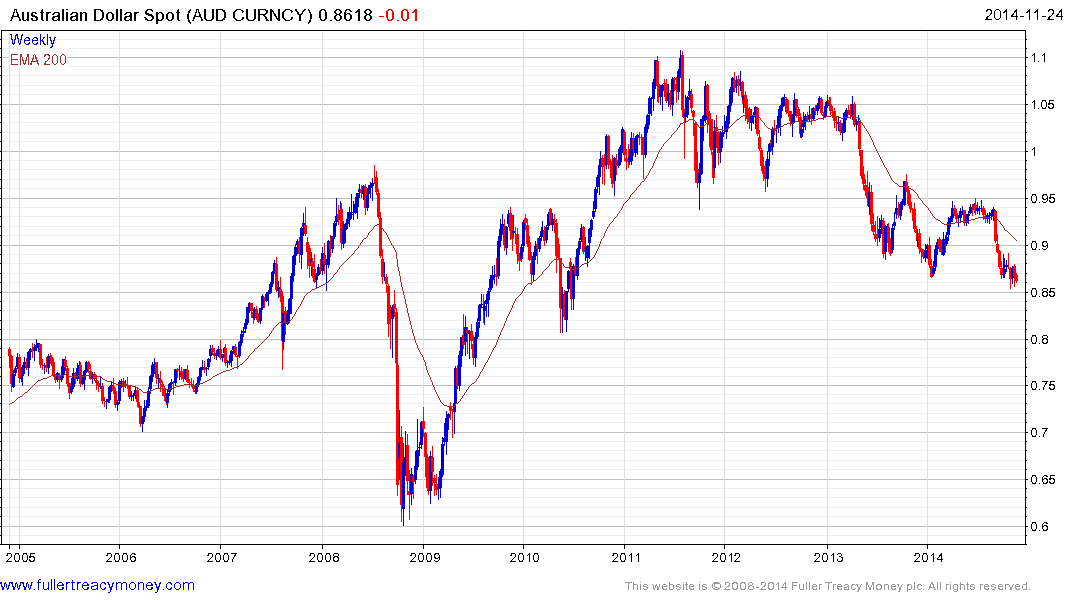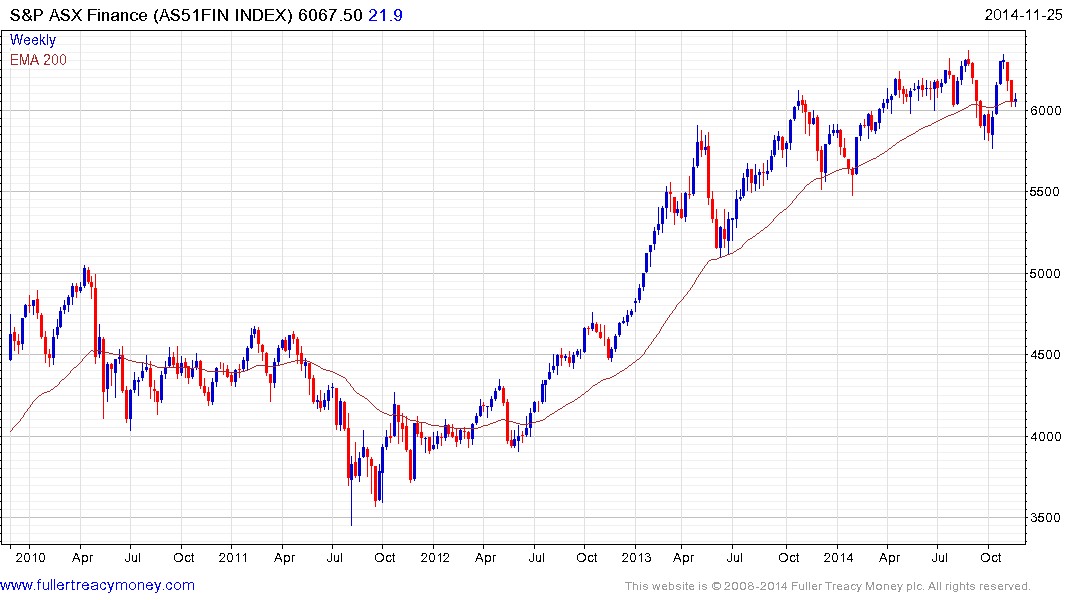RBAs Lowe Sees Australia Dollar Declining With Commodity Prices
This article by Michael Heath for Bloomberg may be of interest to subscribers. Here is a section:
In a speech that set out Australia’s challenges and comparative advantages over developed-world peers, Lowe said complaints about the cost of doing business in Australia are really a currency issue.
“Concerns about the overall level of wages in Australia are, to some extent, really concerns about the exchange rate, with the high exchange rate leading to high wages expressed in foreign currency terms,” he told the Australian Business Economists’ annual dinner. “A lower exchange rate would obviously make a difference to these comparisons.”
The currency traded at 85.42 U.S. cents at 11:10 p.m. in Sydney yesterday after falling to 85.23, the lowest level since 2010.
Commodity related currencies have been under pressure as some of the major bulk commodities and oil prices have declined. This has highlighted the imbalances that have emerged in commodity exporting countries as the domestic economies were pressured under a strong currency while the commodity sector was a boon for government finances. Countries such as Norway and Australia are AAA rated sovereigns but that has not stopped their respective currencies declining. A weak currency is now in both their interests as a rebalancing of their economies becomes a priority.

The Australian Dollar completed a Type-3 top, as taught at The Chart Seminar, in 2013 and has been ranging below it since. Having paused in the region of its lows for the last month, it moved to a new reaction low today and a clear upward dynamic will be required to begin to question potential for additional weakness.

At the Sydney venue for The Chart Seminar earlier this year, we had a lengthy discussion about how the majority of Australian investors were overweight bank shares not least because of their attractive yields on a relative and absolute basis. The four major Australian banks have lost momentum and returned to test the region of their 200-day MAs. They will need to continue to find support in this area if medium-term potential for additional higher to lateral ranging is to be given the benefit of the doubt.
Back to top


